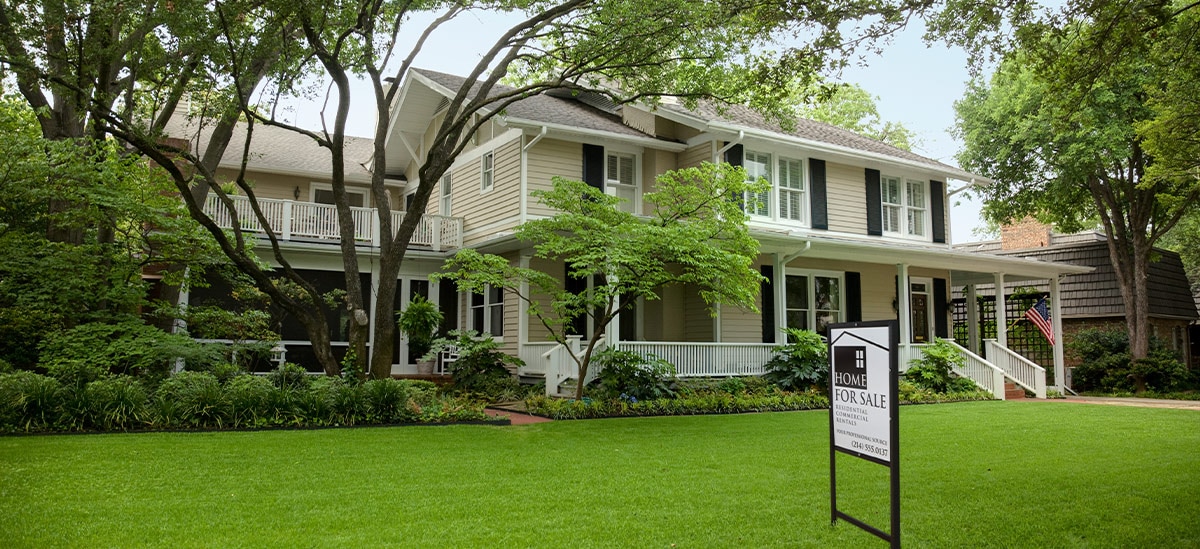
What Is a Mortgage Interest Rate?
Mortgage interest rates (also called mortgage rates or home loan rates) impact both the monthly mortgage payment and the total interest expense over the term of your home loan. So it’s important to understand what mortgage interest rates are and how they work.
There is, however, some confusion about how interest rates are determined and how they affect mortgage payments. With the guidance in this article, borrowers can make better informed decisions regarding their mortgage applications.
In this article, you will find answers to the most frequently asked mortgage rate questions, including:
- What is a mortgage rate?
- How does mortgage interest work?
- How are mortgage rates determined?
- What are the common types of mortgage rates?
- What can you do to secure a lower rate?
What Is a Mortgage Interest Rate?
A mortgage rate is the cost of borrowing money to buy a home. When borrowing money from a lender to purchase a house, you must repay the amount borrowed plus interest, which is calculated using the mortgage interest rate.
A higher rate means it is more expensive to borrow money, and a lower rate means borrowing money is more affordable. This is why borrowers prefer low mortgage interest rates. The lower the rate is, the less you may pay each month in interest expenses. This means a lower monthly mortgage payment and a lower interest expense over the course of the loan.
Are Mortgage Rates and Interest Rates the Same?
“Interest rates” is a broad term that can describe the cost of borrowing money for any loan type. You could, for example, have an interest rate on an auto loan, student loan or personal loan. The term “mortgage rates” specifically refers to the interest rates on home loans.
What Factors Determine Mortgage Rates?
Mortgage rates are based on the perceived risk of lending[1]. The greater the risk to the lender, the higher the mortgage rate to offset that risk. And several factors determine risk, including general economic conditions, specific lender practices, and individual borrower qualifications.
The factors that influence mortgage interest rates include the following.
- The Federal Funds Rate, Set by the Federal Reserve
While the Federal Reserve does not directly set mortgage rates, it does set the federal funds rate, which is the target rate for banks borrowing from one another in the short term. This rate changes in response to economic conditions such as inflation or market stagnation.
And many lenders use this rate to determine their prime rates for different loan types, from auto loans to credit cards to home loans[2]. - Your Credit Score
A high credit score indicates that a borrower has used debt responsibly in the past, making payments on time and keeping debt manageable. This means borrowers with higher credit scores may qualify for lower mortgage rates than borrowers with lower credit scores[3]. - The Loan Type
Different mortgage loan types are available to homebuyers and, because of their differing risk levels, mortgage rates can vary by loan type. As one example, the U.S. Department of Veterans Affairs (VA) backs VA loans. Because this makes it less risky for the lender than other mortgage loan types, a VA loan may come with a lower interest rate[4]. - The Loan Amount
A higher loan amount might result in a higher interest rate, particularly if the borrower requires a jumbo loan, in which the loan amount exceeds the maximum loan limits for a conventional loan[5]. - The Down Payment Amount
The greater the down payment amount, the more equity there is in the home. Equity is the buyer's ownership share of a property, as opposed to the share of the property financed by debt. The greater the equity, the lower the risk for the lender. So a higher down payment can lower your rate[3]. - The Loan Term
A shorter loan term allows the lender to recoup its investment in the loan more quickly. This reduces the lender’s risk and can result in a lower interest rate than a loan with a longer term[3]. - The Mortgage Rate Type
The mortgage rate type can also affect your rate amount. To understand how and why, we need to explore the common types of mortgage rates, which we will do in the next section.
What Are the Common Types of Mortgage Rates?
Mortgage rates can either be fixed or adjustable.
Fixed Mortgage Rates
Fixed mortgage rates are locked in for the entire term of the loan[6]. For example, in a 30- year fixed mortgage, the interest rate would remain the same for 30 years (unless the home was sold or refinanced before the end of the term).
The primary benefit of a fixed rate is knowing exactly what your interest rate and payments will be throughout the term of the loan[7]. A low fixed rate can potentially save a lot of money. And, if mortgage interest rates go down while you’re locked into a fixed-rate mortgage, you may be able to refinance to take advantage of the lower rate[8].
Adjustable Rate Mortgage (ARM) and ARM Rates
Adjustable rate mortgage rates fluctuate as market conditions change during the term of the loan.
The primary benefit of an adjustable rate? The introductory mortgage rate for a set period will typically be lower than that of a fixed rate[8]. Once the introductory period expires, which can last up to ten years, the rate automatically changes with the market, meaning that your rate could potentially increase or decrease. The borrower carries the risk of potential future increases, although some lenders cap the rate increases.
When considering an adjustable rate, review the terms of the mortgage carefully to avoid any surprises from the interest rate fluctuations.
What Can Be Done to Help Get a Lower Mortgage Rate?
By reviewing current financials and credit scores, homebuyers can get an idea of their creditworthiness even before beginning the mortgage application process. This can give buyers a chance to make financial changes that could result in a lower mortgage rate.
Considering the mortgage rate factors that are within the borrower's control, borrowers could potentially reduce their mortgage rates by taking a few steps:
Improving Their Credit Score
Credit scores are calculated based on details like payment history, credit utilization, and length of active accounts, so borrowers can improve credit scores by focusing on these metrics[9]. You could, for example:
- Make all payments in full and on time.
- Pay off any past-due balances.
- Keep your utilization rate below 30% on credit cards (meaning that if a credit card has a $10,000 limit, the balance is kept below $3,000).
- Keep credit card accounts open once they are paid off to maintain your length of active accounts.
- Only apply for credit that is actually needed.
- Review your report for accuracy and notify the credit bureaus of any errors.
Choosing the Loan Type and Terms Carefully
Because different loan types offer different interest rates, you could potentially get a better rate by choosing a different loan type. You might also get a lower rate by choosing a shorter loan term, opting for a 15-year mortgage rather than a 30-year mortgage.
Increase the Down Payment
Because a higher down payment means less risk for the lender, lenders might offer a lower rate to borrowers with a higher down payment. Can you put 10% down? Or perhaps 15%? That could help lower the rate. A 20% down payment might offer the lowest interest rates available.
Choose a Less Expensive Home
Less expensive homes allow down payment funds to go further. If, for example, you have
$40,000 to put down, this would be an 8% down payment on a $500,000 home, but it would be a 10% down payment on a $400,000 home.








